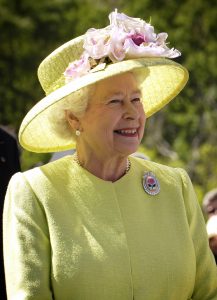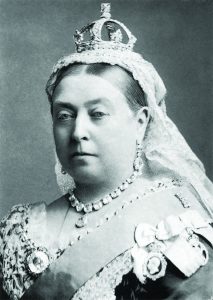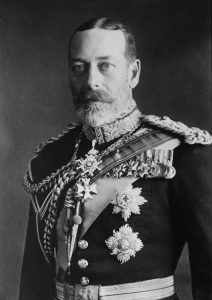For over 180 years, the RMBF has been providing practical assistance for those in need. As the medical profession has changed, so has the Royal Medical Benevolent Fund.
Early days
The RMBF was founded as the Medical Benevolent Fund in 1836 by members of the Provincial Medical and Surgical Association, which itself later became the British Medical Association. From the outset the RMBF was non-contributory and all funds were donated. All practitioners were eligible for assistance irrespective of whether they had ever paid money in to the charity and regardless of whether or not they were a member of the Provincial Medical and Surgical Association. Initially small sums were given to a handful of applicants, but this quickly grew and by the early 1850s the RMBF was distributing over £400 per annum in both one-off grants and regular payments.
Victorian orphans
In the nineteenth century, beneficiaries of the RMBF tended to fall into three categories. First, elderly or frail doctors were supported as their ability to earn a living declined. Second, widows of medical men were provided with money to live independently (and so avoid the need to apply for other charities or, worse still, register for poor relief). Third, orphans of medical men were assisted, but this element of the charity had a surprising feature: the majority of the orphans were adult women, rather than children. The charity was recognising the limited opportunities for women in Victorian England. Unmarried daughters of doctors had few careers open to them, and none that allowed women to earn very much. If medical fathers failed to leave savings, a legacy or annuity for their womenfolk, these adult orphans could find themselves impoverished, in a world without a welfare state or a pension system. Widows and orphans formed by far the largest group of beneficiaries of the RMBF towards the end of the Victorian era. In the 1880s, 90 percent of grants were made in these categories.
War and peace
The fund received its ‘Royal’ prefix in 1912 and employed staff from 1915; up to that point, it had been run entirely voluntarily. But the onset of war posed new problems and the Fund developed new ways to assist beleaguered practitioners. In 1915 a War Emergency Fund was set up to help medical families in temporary straits due to the war, and by the time of its closure in 1928 it had distributed over thirty-five thousand pounds. In the 1930s the Fund’s Centenary Appeal sought special donations ‘towards training the widows and orphan sons and daughters of medical practitioners to enable them to be self-supporting’. Then in 1940 the RMBF jointly administered a War Emergency Fund with the British Medical Association.
New millennium, new needs
The medical world has changed enormously since the RMBF was first established and as the medical profession has changed, so has the RMBF. Nowadays the majority of applications for help come from doctors themselves, rather than their families. The 21st century has seen unprecedented levels of medical student debt and ever increasing litigation, not to mention rising government, media and patient expectations and evidence of increasing stress and disillusionment within the profession.
Royal Patronage

Queen Elizabeth II became the charity’s Royal Patron after acceding to the throne in 1952. She attended the RMBF‘s 150th anniversary celebrations at St James’ Palace, and in 2016, invited the RMBF to attend her Patron’s Lunch on the Mall outside Buckingham Palace. We are so grateful that the charity enjoyed Her Majesty’s patronage for more than 70 years.
 2019 marked the 200th anniversary of the birth of Queen Victoria, who was one of our first major benefactors. In 1871, HRH the Prince of Wales, Victoria’s eldest son, had become dangerously ill with typhoid. On his much-celebrated recovery, our then President, Sir George Burrows, issued an appeal setting out the objects of the charity – then still known as the British Medical Benevolent Fund – which was carried by the newspapers. As a result, Queen Victoria graciously contributed £100, followed by a further £200, to the charity’s work.
2019 marked the 200th anniversary of the birth of Queen Victoria, who was one of our first major benefactors. In 1871, HRH the Prince of Wales, Victoria’s eldest son, had become dangerously ill with typhoid. On his much-celebrated recovery, our then President, Sir George Burrows, issued an appeal setting out the objects of the charity – then still known as the British Medical Benevolent Fund – which was carried by the newspapers. As a result, Queen Victoria graciously contributed £100, followed by a further £200, to the charity’s work.
 Royal Patronage was granted by King George V on 12 July 1912, when the charity became the Royal Medical Benevolent Fund. At this point the fund had been established for 77 years, and had distributed over £160,000 and helped more than 9,000 poverty-stricken members of the medical profession.
Royal Patronage was granted by King George V on 12 July 1912, when the charity became the Royal Medical Benevolent Fund. At this point the fund had been established for 77 years, and had distributed over £160,000 and helped more than 9,000 poverty-stricken members of the medical profession.
 Queen Elizabeth The Queen Mother was a Patron and supporter of the Ladies’ Guild of the RMBF from 1927-1972. The picture above shows her in attendance at one of the Ladies’ Guild events.
Queen Elizabeth The Queen Mother was a Patron and supporter of the Ladies’ Guild of the RMBF from 1927-1972. The picture above shows her in attendance at one of the Ladies’ Guild events.
